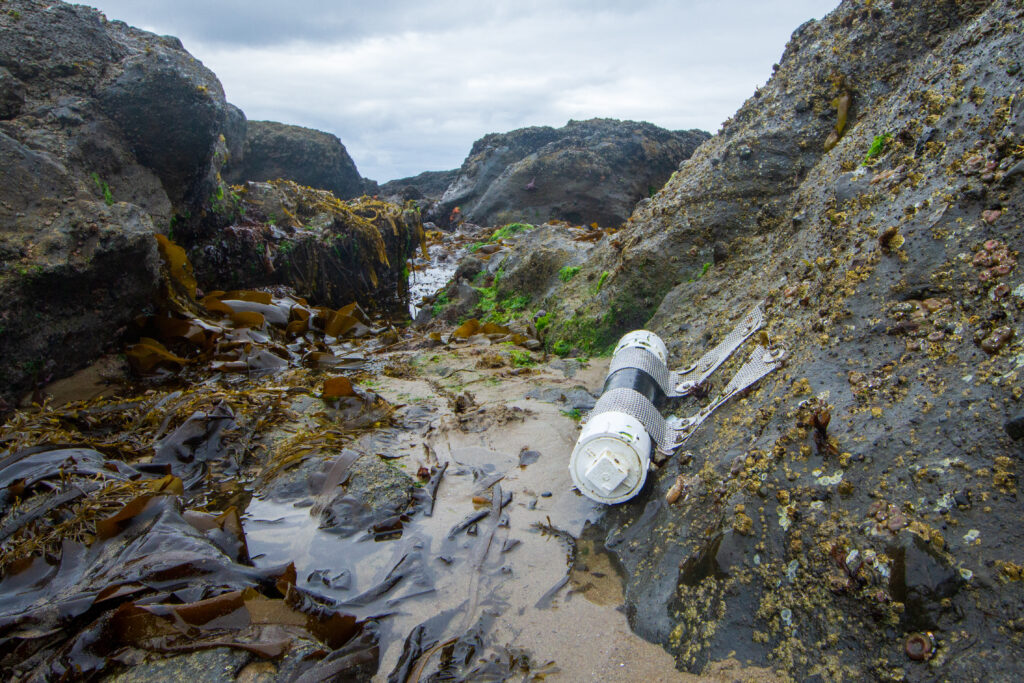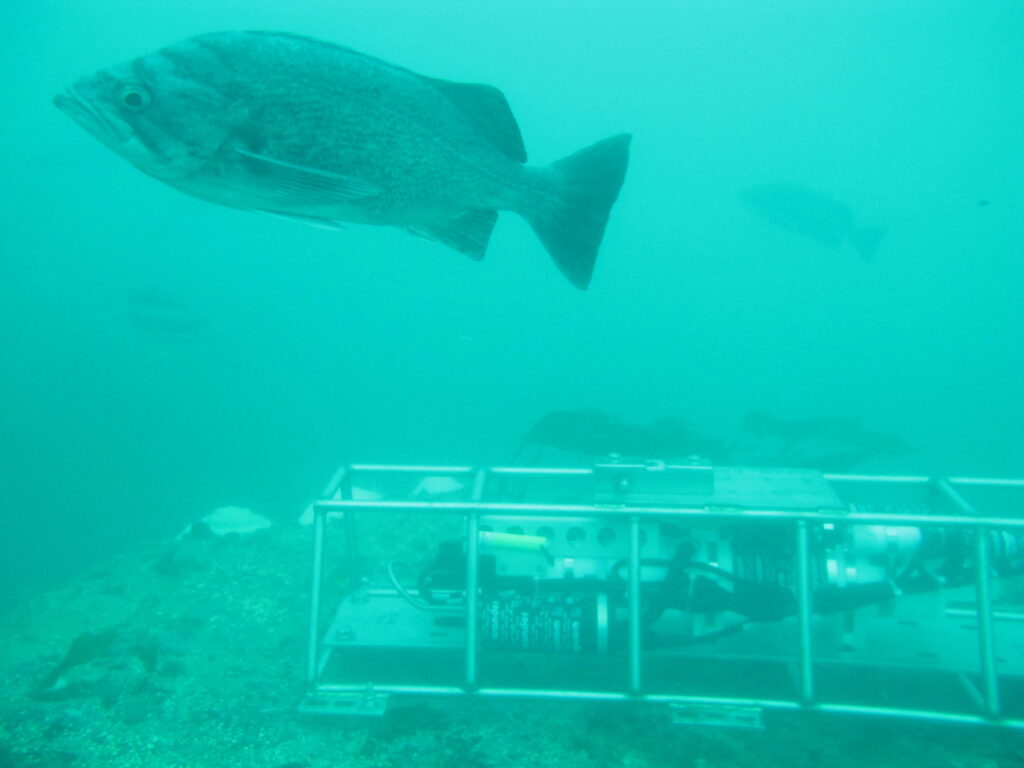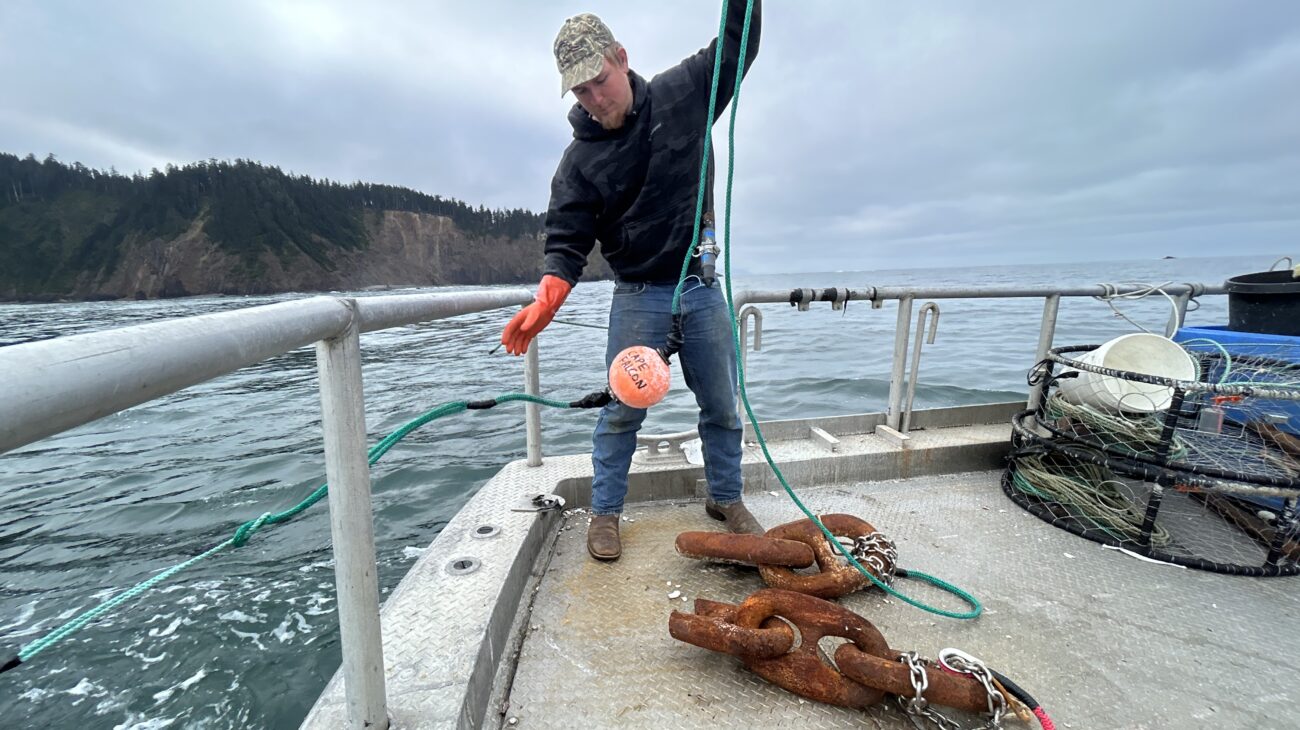On-going ocean monitoring in Oregon’s Marine Reserves is unlocking secrets about temperatures and oxygen levels known to impact groundfish and invertebrate activities, create stresses on ecosystems and even alter sport anglers’ catches. Some of the data go back two decades at what is now the Cape Perpetua Marine Reserve near Yachats and are buoyed by oceanography monitoring in recent years at the state’s four other marine reserves.
The phenomenon is called hypoxia, and data collected in the reserves is showing an apparent trend in size and length of these episodes, and that they differ throughout the Oregon Coast. “In some places we’ve never looked until recently, we’re starting to see our first glimpses of it,” said Dr. Lindsay Aylesworth, the Marine Reserves Program Leader.
Our yearly oceanography monitoring began this month with the placement of moorings in the Cape Falcon Marine Reserve as well as in a nearby comparison area off Cape Meares. The moorings, which were deployed by the Garibaldi-based F/V Lady Lee, contain sensors that track ocean temperature and oxygen levels through early fall, when they will be removed.
Sensors are also affixed to eight Standard Monitoring Units for Recruitment of Fishes (SMURFs). They were deployed in late April at the Otter Rock Marine Reserve and the nearby Cape Foulweather comparison area near Newport. Another mooring was at the Cascade Head Marine Reserve. SMURFs will also be deployed in the Redfish Rocks Marine Reserve, the southernmost reserve near Port Orford.
Data on oxygen and temperature have been collected consistently since 2002 at Cape Perpetua. Oregon State University (OSU) and the Partnership for Interdisciplinary Studies of Coastal Oceans (PISCO) monitor oxygen and temperature changes in the Cape Perpetua Marine Reserve. The Cape Perpetua oceanography monitoring efforts are the longest observed record for dissolved oxygen in near-shore ocean waters on the West Coast.
So, what do these data tell us so far?

Early data show a relationship between oxygen levels, wind direction and water temperatures. North winds, desired for good ocean nutrient conditions, routinely coincide with decreases in sea surface temperature and periods of low oxygen levels, which can plunge to hypoxic levels. These zones disperse with the return of south winds that bring warmer water and higher oxygen levels to the surface. The size of these low-oxygen zones come and go and vary across state waters, but they have grown and persisted for longer durations of time in recent years. Low oxygen levels, particularly when they plunge to levels of hypoxia, are known to place stress on fish, invertebrates, and underwater ecosystems.
Along the coast, the south has seen the fewest episodes of hypoxia, when compared to central and north coast conditions. During days of high levels of dissolved oxygen, catch rates during the marine reserves’ hook-and-line surveys show better catches of groundfish, data show. Days with low oxygen levels correspond to relatively poor catch rates among survey volunteers. These sensors, for instance, tracked a period of nearly six months in 2021 when portions of Oregon’s near-shore waters were below hypoxic levels, Chan said. Data also show that the Cape Falcon Reserve hit the hypoxia threshold only one day in September during last year’s monitoring season.
While Cape Perpetua has been the backbone of oceanographic monitoring, similar data collected at Oregon’s four other near-shore reserves began as early as 2010 and been consistent since 2019.
After various hits and misses on methods, suspending sensors from a crab line weighed down to the sea floor by a large anchor chain and marked by flagged floating buoys was the most reliable and cost-effective way to collect these data, Aylesworth said. Each mooring costs about $3,500, with the oxygen sensor alone costing about $1,600. Crab pots containing similar sensors are deployed during hook-and-line fish surveys in reserves and comparison areas, unlocking information about ocean conditions and catch rates.
What could this mean for fish assemblages?

Conclusions from oxygen and temperature data is preliminary; however, early data suggests that there could be a relationship between more oxygen and higher fish catch rates. During days of high levels of dissolved oxygen, catch rates during the marine reserves’ hook-and-line surveys show better catches of groundfish, data show. Days with low oxygen levels correspond to relatively poor catch rates among survey volunteers.
